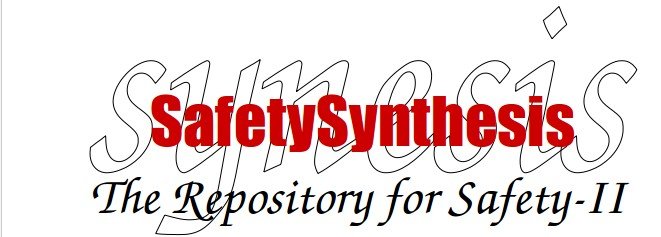All material (c) Erik Hollnagel, 2021.
What's in a name?
In "safety" where there's now a 't',
there might as well
be an 'l'
The word safety is grammatically a noun which, according to https://www.etymonline.com/, has been used from the beginning of the 14th century. The origin is, no surprise, from the Latin word salvus which means “uninjured, in good health, safe”. In a technological context its use as “safety-valve”, the name of the valve in a steam engine which diminishes the risk of explosion, is from 1797. The same term was used in a figurative sense from 1818 onward. And “safety first” as an accident-prevention slogan is from 1873.
Today the word safety can be found everywhere and the concern for safety – in the sense of being free from danger, risk or injury – is ubiquitous. No one could sensibly argue against the need to be safe in that meaning. Indeed, in Abraham Maslow’s hierarchy of needs, safety is described as a fundamental need, second only to physiological needs (food, water, warmth, rest).
Being safe is, however, not the same as safety. The term “safety management system” is by now used so often (Google hits: 11.900.000) that we have stopped thinking about what it actually means. Taken literally is means a system that is used to manage safety. This immediately raises the question of what this “safety” is, that is supposed to be managed.
A safety management system is a systematic approach to managing safety, including organisational structures, accountabilities, policies and procedures. (1)
But defining a safety management system as a systematic approach to manage safety doesn’t actually make it any clearer what safety is. (In Kantian terminology it is an analytic rather than a synthetic proposition. Stating that "an X management system is a system to manage X" does, however, not really explain what X is.) I suggest that the problem is mostly due to the use of the noun safety, and that it would be more in line with the etymology of the word to use it as an adverb. In other words, as “safely” rather than “safety”.
Instead of talking about a safety management system (SMS), we should talk about how to manage a system safely: how to manage an airline safely rather than how to manage airline safety, how to manage a mine safely rather than how to manage mining safety, how to manage healthcare safely rather than how to manage healthcare safety, and so on. This is indeed what we actually mean when we use the SMS term: it is about managing how a system, a process, or a company performs so that the outcome is acceptably safe, rather than to manage the safety of that system, etc. (And being safe means, of course, that as much as possible goes well rather than that as little as possible fails.)
SMS is a structured process that obligates organizations to manage safety with the same level of priority that other core business processes are managed. (2)
As the above quote from the FAA kindly points out, being safe is not the only concern of a business. (And once again FAA's definition is an analytic rather than a synthetic proposition.) Depending on what the purpose of a system is, there will be several priorities or criteria that have to be considered in parallel. There is a need to be productive, to be efficient, to be reliable, to have acceptable quality of products or services, to satisfy customers / clients / stakeholders, to generate revenue, etc. Each objective is usually pursued by itself, with specialised organisation roles and structures, methods, terminology, and traditions. So the situation looks something like this.
The question is, however, whether the management is of n different systems or whether the management is of one system but with n multiple interdependent objectives and criteria in mind. If the latter is the case (as I happen to believe), we should make an effort to avoid using safety as a noun, as in safety management, quality management, production management, etc. The first step would be to use the adverbial forms and talk about managing (activity X) safely, productively, etc. This is easily done for some of the terms, but not for all of them. Yet it is not enough to change “safety” to “safely”, “production” to “productively”, and so on. It is also necessary to acknowledge the need to manage them together, as multiple interdepend aspects or facets of the same underlying process or system. There is, fortunately, a term that captures just that: synetic management.
Of which more may be said later.
Footnotes
(1) https://www.casa.gov.au/safety-management/safety-management-systems/what-safety-management-and-safety-management-systems
(2) https://www.faa.gov/about/initiatives/sms/

